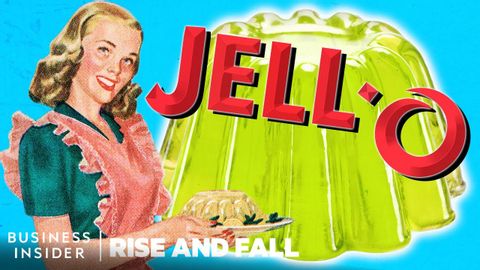果冻的兴衰(The Rise And Fall Of Jell-O)
joey joey 發佈於 2021 年 05 月 24 日  沒有此條件下的單字
沒有此條件下的單字- v.t./i.棒;黏貼,張貼;堅持;伸出;忍受
- n. (c.)棍棒,棍枝,枝條
US /ɪˈvɛntʃuəli/
・
UK /ɪˈventʃuəli/
- n. (c./u.)串;束;一群人
- v.t.使成一串
- v.t./i.打褶
US /dɪˈprɛʃən/
・
UK /dɪ'preʃn/
- n. (c./u.)憂鬱;蕭條;憂鬱症;經濟蕭條;低氣壓;窪地

